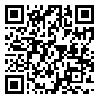Mon, Mar 24, 2025
[Archive]
Volume 33, Issue 4 (2023)
IJAUP 2023, 33(4) |
Back to browse issues page
Download citation:
BibTeX | RIS | EndNote | Medlars | ProCite | Reference Manager | RefWorks
Send citation to:



BibTeX | RIS | EndNote | Medlars | ProCite | Reference Manager | RefWorks
Send citation to:
Kheirollahi M, Safarnezhad S. Educational Structure in Digital Architecture; Challenges and Opportunities. IJAUP 2023; 33 (4)
URL: http://ijaup.iust.ac.ir/article-1-648-en.html
URL: http://ijaup.iust.ac.ir/article-1-648-en.html
1- Department of Architecture, Mashhad Branch, Islamic Azad University, Mashhad, Iran , Dr.MehranKheirollahi@gmail.com
2- Department of Architecture, Mashhad Branch, Islamic Azad University, Mashhad, Iran
2- Department of Architecture, Mashhad Branch, Islamic Azad University, Mashhad, Iran
Abstract:
The failure to adapt existing architectural education models to the evolving cultural and technological landscape of the digital age, coupled with the rapid advancements in computer programs within the architectural profession, has underscored the imperative of establishing a proficient framework for architecture education that aligns with the demands of the contemporary architectural landscape. In response to this exigency, architectural design concepts have emerged as instrumental tools in the instructional paradigm of digital architecture, mirroring the crystallization of modernism during the Bauhaus period—an era marked by significant shifts in theoretical and design perspectives.
The principal objective of the current investigation is to comprehend the educational framework of digital architecture with the intent of bridging the existing gap between architectural education and professional practice. The methodology employed for data acquisition in this study encompasses comprehensive library research and an examination of pertinent documents. The convergence of architecture and digital education has introduced a novel trajectory for the advancement of pedagogical practices within the discipline of architecture. However, the integration of laboratory activities and technological components in practical training remains sluggish, necessitating responsiveness to societal demands, increased financial allocation to educational infrastructure, and the mobilization of teaching resources to facilitate widespread adoption and sustained advancement. The adoption of a research project-oriented approach to teaching has proven instrumental in achieving the objectives of motivating students to contemplate various facets of the nexus between technology and the environment.
The principal objective of the current investigation is to comprehend the educational framework of digital architecture with the intent of bridging the existing gap between architectural education and professional practice. The methodology employed for data acquisition in this study encompasses comprehensive library research and an examination of pertinent documents. The convergence of architecture and digital education has introduced a novel trajectory for the advancement of pedagogical practices within the discipline of architecture. However, the integration of laboratory activities and technological components in practical training remains sluggish, necessitating responsiveness to societal demands, increased financial allocation to educational infrastructure, and the mobilization of teaching resources to facilitate widespread adoption and sustained advancement. The adoption of a research project-oriented approach to teaching has proven instrumental in achieving the objectives of motivating students to contemplate various facets of the nexus between technology and the environment.
Keywords: Digital architecture, Educational structure, Collaboration-community response-social stimulation.
Type of Study: Research Paper |
Subject:
Architecture
| Rights and permissions | |
 | This work is licensed under a Creative Commons Attribution-NonCommercial 4.0 International License. |





